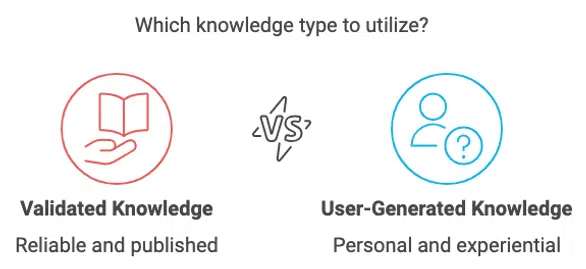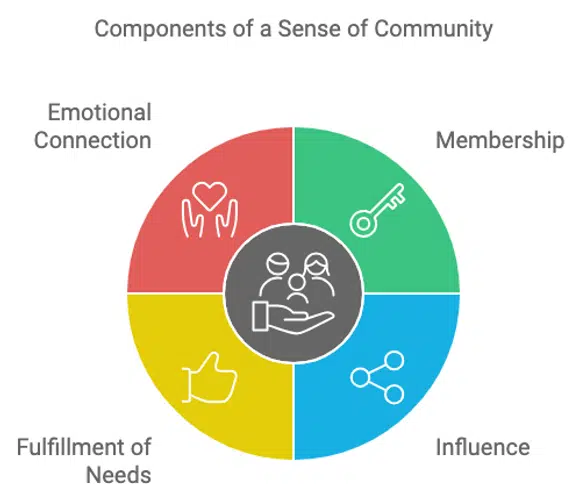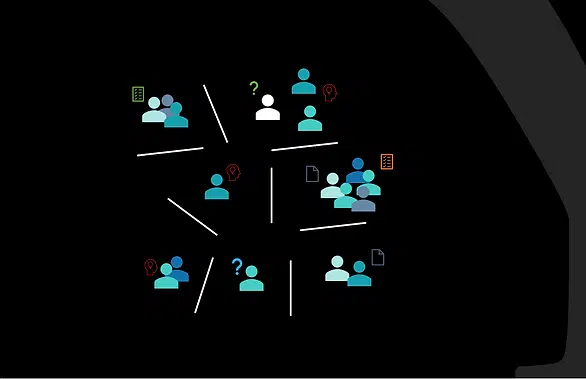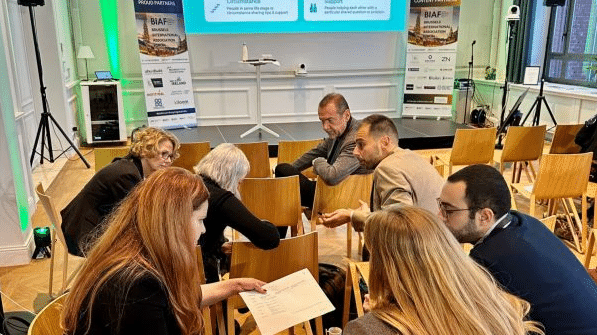Community of practice: The added value of online community for professional associations
Professional associations are communities, more specifically, communities of practice. This type of community is about sharing knowledge and peer-to-peer learning. Though certainly not new, the concept of the community of practice is currently very relevant for professional and trade associations.
Traditionally, associations have facilitated networking and the exchange of best practices by organizing events. But modern associations facilitate year-round networking and knowledge sharing, by successfully utilizing online communities. What is a community of practice? How does an online community add value to both members and to the association?
As this blog post by Yunits rightfully points out:
At the core of any professional association is sharing professional and trusted knowledge and setting standards and best practices with and among members. This is where their value lies – in the past, present, and the future, as research by the ASAE Research Foundation shows
Types of Knowledge
Professional associations very often have a focus on knowledge sharing, both between the association and members and amongst members, with the goal of working together to better their industry or profession as a whole. To effectively share knowledge, we need to understand the types of knowledge and how they can be shared. There are two types of knowledge:
1. Validated or Explicit Knowledge
This is knowledge that has been validated and published by (association) experts. Explicit knowledge is observable. It has been expressed or stored, making it independent of any individual.
Explicit knowledge is shared via reports, publications, event sessions, etc.
2. User-Generated or Implicit Knowledge (Also called Tacit Knowledge)
This is knowledge generated and shared by peoplemembers or other types of participants. Implicit knowledge is personal and lives within people’s heads, and is more difficult to share with others.
By sharing personal experiences and lessons learned, members are sharing implicit knowledge with others to possibly help them avoid similar mistakes or advance their careers more quickly.
In practice, the first type of knowledge is often referred to as “information,” while the second is called “knowledge.”

Traditionally, associations primarily focus on gathering and publishing validated knowledge or information. This often takes the form of reports, publications, research, and scientific articles. Additionally, they frequently offer professional education and certification. This typically means that knowledge not published by the association is not available—at least not under the association’s umbrella.
For modern associations, facilitating the sharing of user-generated, implicit knowledge is very important. They encourage their members to share the knowledge that resides in their minds. It involves subjective insights, intuition, and experience. When members can learn from one another, they are more effective at achieving their goals, and thus gain incredible value from being a member of your organization.
For example, you can gain knowledge from reading a book about project management (explicit knowledge). However, how you manage a project in practice also involves implicit knowledge based on your experience and the experience of others working with you. This is where you combine what you’ve learned from publications with your experience, skills, and attitude. Think of sharing your implicit knowledge as sharing “best practices.” This implicit knowledge isn’t published or easily accessible; if you’re not physically present, neither is your knowledge.
Future-focused industry and professional associations take knowledge sharing a step further: they focus on peer-to-peer learning. Their members collaborate, actively share their knowledge, and learn from one another. This is a community, specifically a “Community of Practice.”
What is a Community?
There are many definitions of the word “community”. A community is not a black-and-white concept. The stronger the “sense of community”, the more it is considered a community.
According to psychologists McMillan & Chavis, this sense of community is defined by 4 factors:

1. Membership
The factor “membership” has five attributes:
- Boundaries: Membership has boundaries; this means that there are people who belong and people who do not.
- Emotional safety: Emotional safety is necessary for members to express their needs and feelings and to develop intimacy.
- A sense of belonging and identification: The feeling of belonging includes the belief and expectation that one fits within the group, has a place there, feels accepted by the group, and is willing to sacrifice for the group.
- Personal investment: Putting in effort to become a member gives a sense that one has earned a place in the group, making the membership more meaningful and valuable as a result of this personal investment.
- Common symbol system: Social conventions that create a distinction between members and non-members, such as welcoming rituals, language use, clothing, flags, mascots, logos, etc.
2. Influence
Influence works in two directions: Members will feel a stronger sense of community if they feel they have influence over the community. Conversely, the greater the community’s influence on a participant, the stronger the cohesion and sense of community within the group.
3. Fulfillment of neefds
Reward and affirmation that the community meets the needs of participants creates a positive sense of togetherness.
4. Emotional connection
A shared emotional connection is largely based on a shared past with which people identify. Therefore, physical events and interactions greatly contribute to the sense of community.
What is a Community of Practice?
A “Community of Practice” is a specific type of community, aimed at knowledge sharing and peer-to-peer learning.
Communities of Practice are groups of people who share a concern or a passion for something they do and learn how to do it better as they interact regularly
Etienne Wenger
(Source: wenger-trayner.com)
A Community of Practice has three defining characteristics:
1. The Domain
Members of the community share a common interest, skill, and/or commitment to a particular subject. This shared focus creates a foundation and dedication that motivates members to participate.
2. Community
Through joint activities, discussions, brainstorming sessions on problem-solving, and information sharing, members build relationships. This lays and strengthens the foundation of the community. The interaction and peer-to-peer learning transform members into a true community.
3. Practice
Members of a Community of Practice develop a shared repertoire of resources in a knowledge base: experiences, stories, reports, tools, and methods for addressing recurring issues—in short, a shared practice. This knowledge, skillset, and inspiration can be applied by all members in their daily professional activities. Developing this shared practice takes time and requires continuous interaction.
The combination of these three elements forms a Community of Practice. By developing these elements in parallel, such a community emerges.
Knowledge Sharing Within an Online Community of Practice
An increasing number of associations are focusing on peer-to-peer learning and sharing user-generated knowledge. They facilitate this in an (online) Community of Practice, thereby enhancing their relevance.
As Wenger states:
A growing number of associations, both professional and otherwise, are seeking ways to focus on learning through reflection on practical experiences. Their members are restless, and their loyalty is fragile. They must offer valuable learning activities. The peer-to-peer learning activities typical of learning communities provide a complementary alternative to the more traditional course offerings and publications
You can stimulate and facilitate knowledge sharing by connecting members in relevant ways and removing barriers. Encouraging and supporting interaction and informal learning is key. For example, how are members adhering to new legislation in their industry or profession? Or how are they implementing COVID rules when organizing an event or a football match? Asking these questions help to unlock the knowledge that resides in their minds.
Case: Dutch soccer association connects amateur Footbal Clubs and facilitates collaboration
Many football clubs face the same challenges. What do you do when members don’t pay their fees? Where do you buy a scoreboard? How good is the quality of the artificial turf fields?
As a club, you can search for the answers yourself or leverage other clubs’ knowledge. In the Netherlands, there are about 2400 amateur football clubs. Chances are, one of them has encountered the same problem before and found a solution.
This is where ‘Eén tweetje’ comes in. With an extensive question-answer module, board members of amateur football clubs can engage in conversations and tap into each other’s knowledge.

There is a lot of knowledge in people’s heads. Take away the boundaries between people and facilitate the sharing of that knowledge. Then you gain relevance as an association. At the same time, it’s important to ask what knowledge members need. What do they want to learn more about? By understanding this, you can match existing knowledge with the needs of your members. This allows you to offer more relevant and personalized information and knowledge, making it easier for members to find answers to their questions.
Staying Relevant and Winning “Fight for Attention”
As member expectations evolve and digital transformation accelerates, associations need to adapt to thrive. To remain relevant as an association, it’s essential to meet members’ needs and provide your members with opportunities to connect online and share knowledge easily. The best way to achieve this is through a dedicated online community platform, because such a platform offers numerous possibilities to support and encourage knowledge sharing within your community of practice smartly:
- Online platforms allow professionals to share insights, ask and answer questions, and collaborate on problem-solving in a safe and trusted environment, managed by the association.
- Online platforms facilitate informal learning and quick information sharing.
- Regular virtual meetings and workshops can be initiated by both the organization and its members facilitate learning sessions and discussions through video conferencing.
- Shared digital resources in a centralized digital knowledge bank provide members with easy access to relevant resources and learning materials.
- Collaborative project tools and wikis encourage co-creation and documentation of knowledge.
Moreover, facilitating interaction on your own community platform allows you to use your member data for more personalized and relevant communication, based on member preferences and behavior. This enables your association to cut through the noise and win the “fight for attention”. Instead of manually sending out emails, community platforms typically send out automatic notifications, pro-actively inviting members to interact on a central platform. This saves your association time and resources and increases member engagement.
By integrating Wenger’s principles into digital strategies, we can foster more dynamic and inclusive communities of practice, and thus do the same for associations. This approach not only supports professional growth and development of your members, but also enhances the collective expertise within your sector, thereby increasing the impact on your organizational mission.
If you need help building your online community of practice, please find a Community Consultant in the Community Consultants Collective Directory: https://directory.communityconsultants.life/find-a-consultant/
Co-authored by Community Consultants Collective Board Members Mathijs Vleeming of Community Platform Yunits, specializing in knowledge communities for professional associations & Catherine Hackney of Confident Communities Consulting. Contributions by Todd Nilson and John Nawn.
The Community Consultants Collective (https://www.communityconsultants.life/) is shaping the future of the community consultant profession. The Community Consultancy Collective is a safe space where community consultants can learn and regularly connect with each other. We work together to develop creative solutions to challenges as we learn and grow from our shared experiences. The Community Consultancy Collective celebrates the positive impact that consultants can have on their clients’ communities, and the great impact that communities can have on the world.
As previously published by the Community Consultants Collective.
Lees ook

Digital services and the changing role of associations [4/5]

How do you get your online community to engage?

